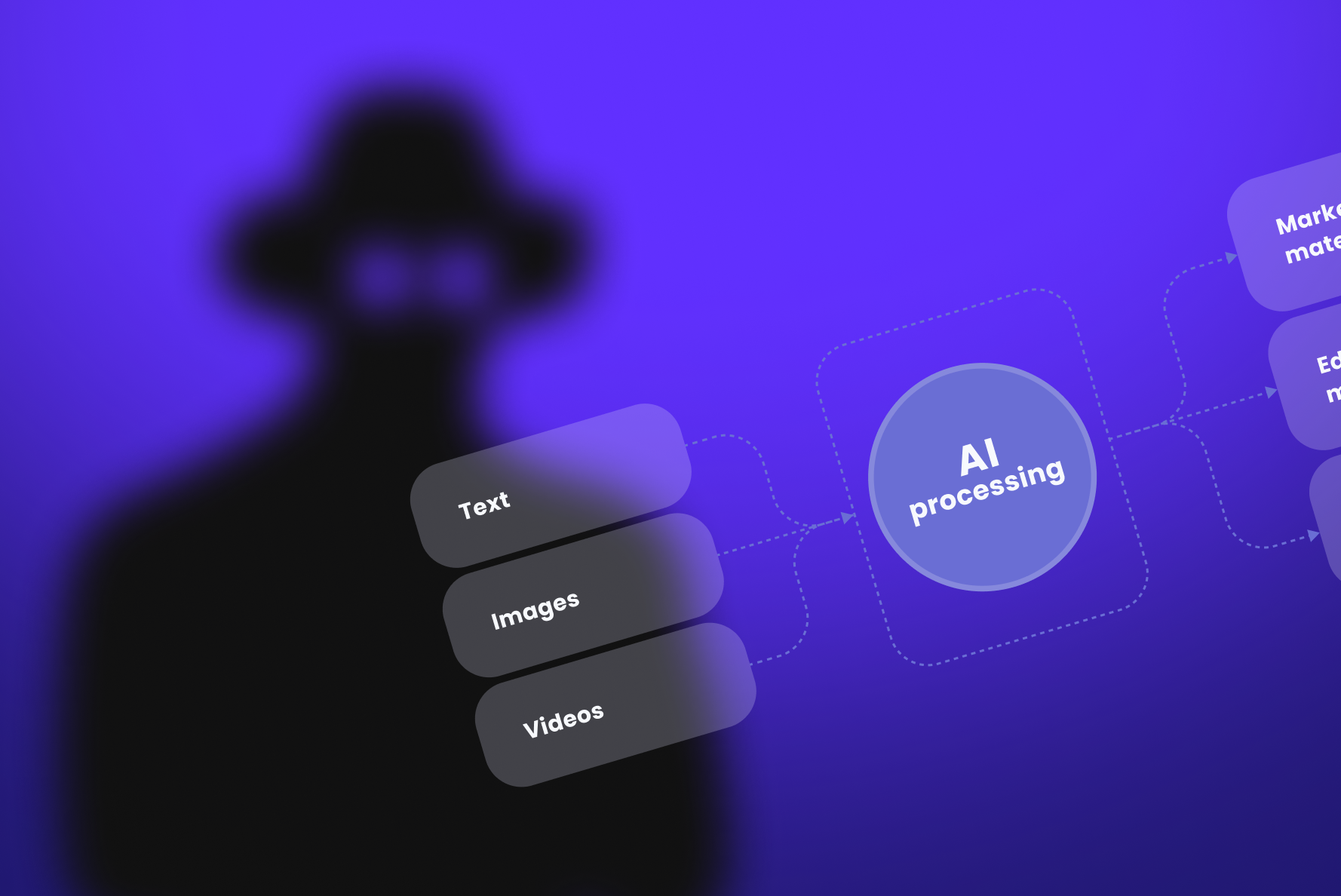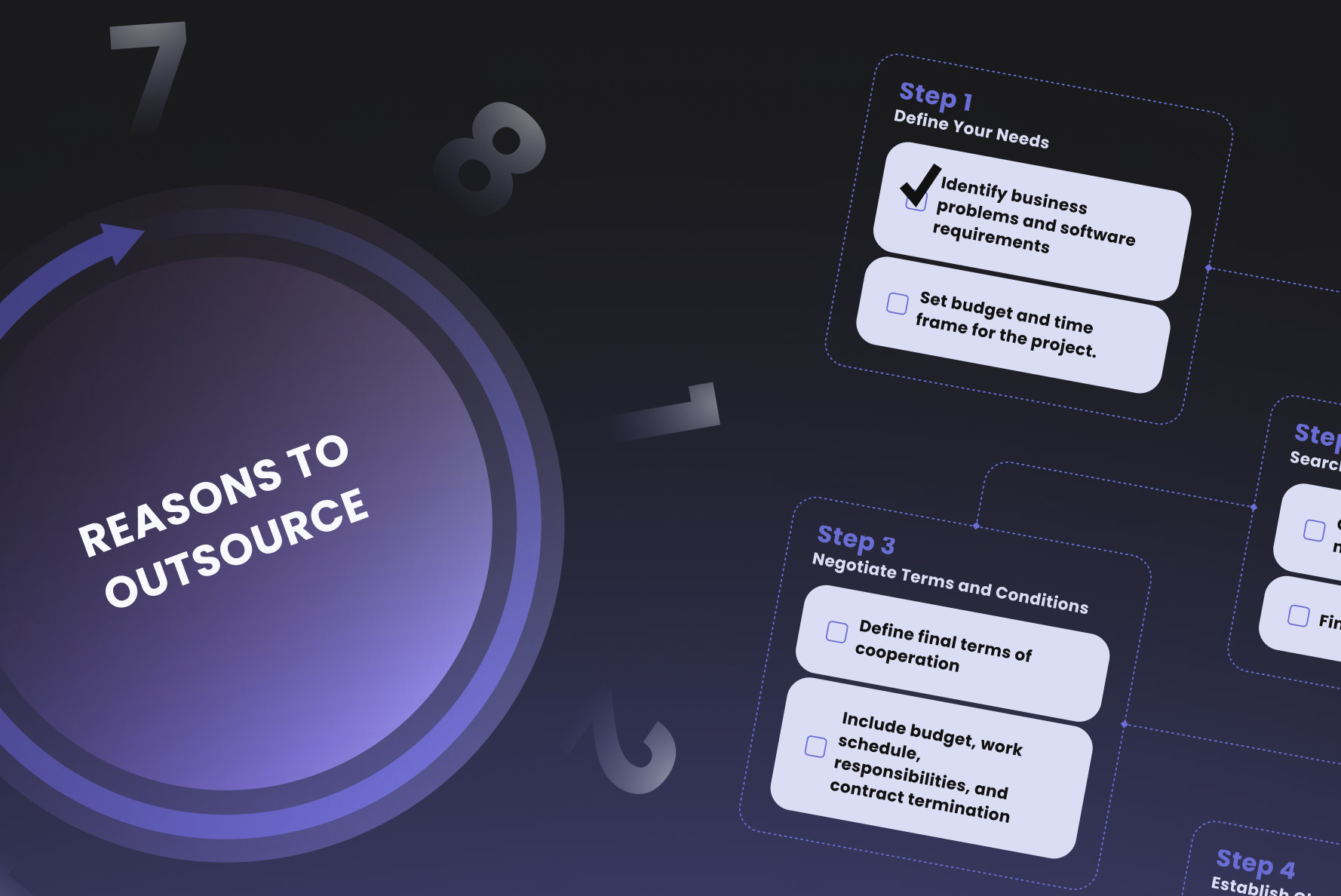Many small businesses struggle to hire backend developers. These server-side engineers are essential for improving the efficiency of your startup‘s digital infrastructure, ensuring fast loading times, seamless data retrieval, and a satisfying user experience. As an employer, you must thoroughly assess the candidates. Otherwise, a bad hire can devastate your finances and project planning. Startups only flourish when they handle their daily operations with minimal resources.
In this guide, Uvik examines the primary reasons to hire backend developers and provides step-by-step instructions on their employment. You will learn how to define your needs, find and screen candidates, what interview questions to ask, and how to make an offer. We will explain how to onboard, train, support, and track the progress of your newly hired backend developers. Finally, you will discover how IT staff augmentation companies like Uvik can help you hire.
Why Hire a Back-End Developer?

Backend developers ensure your website functions properly by focusing on databases, back-end logic, application programming interfaces (APIs), architecture, and servers. They enable browsers to communicate with databases and store, understand, and delete data. Let’s look at the reasons for hiring server-side programmers more closely.
- Build and maintain websites and web/mobile apps. Backend developers use numerous tools, frameworks, and languages to turn simple prototypes into completely functional websites.
- Assess the overall efficiency and speed of the website. Backend Python engineers influence a website’s overall performance through server-side optimization. Their work includes refining database queries for efficient data retrieval and storage, and enhancing server-side logic to expedite processing times. It directly affects how swiftly content reaches the frontend.
- Enable scalability. They allow startups to scale seamlessly as they expand, deploying technologies that sustain workflow and automate activities. Senior or middle backend engineers also lead training and mentorship for junior developers.
- Meet the users’ needs. Backend developers invest their expertise in server-side logic, working meticulously behind the scenes to support the user experience that frontend developers construct. They provide the efficient functioning of the website interface, ensuring that any data exchange behind the user interfaces is swiftly and securely.

Step 1: Define Your Needs
How to hire a backend developer? First, you need to define your server-side development requirements by deciding on the following:
- Developer’s specific skillset and experience
- Employment type
- Your hiring budget
Your Backend Developer’s Specific Skills and Experience
Backend development links the client-side and server-side components, making them work together as a system. Your backend developer must have experience working with at least one programming language, such as Java or Python. To design an application, they must also use server-side languages such as Go, Ruby, PHP, R, or Node.js.
It is critical to discuss what your potential server-side developers know, what they can offer, and which technologies they can use to create your website. Aside from the mentioned technologies, a capable back-end developer is skilled at creating and maintaining your website’s server and database. For example, they should be able to work competently with
- Database technologies such as MySQL, MongoDB, and Oracle.
- Managing servers such as Microsoft IIS, Linux, and Apache.
- APIs, such as AJAX, SOAP, and JSON.
Backend Developer’s Employment Types
You can hire a backend developer as a full-time employee, contractor, or freelancer.
- Full-time employees. You hire a developer who will work 40 hours per week for your company. Full-time server-side developers have fixed monthly remuneration and other benefits like paid vacations, fitness cards, and medical insurance. It is a good decision for long-term projects. However, hiring full-time is associated with high costs and legal commitments. You must provide 2 or 3 months’ notice and severance pay to dismiss an employee.
- Contractors. Backend development contractors are experts with specific skills who provide services full-time for a single company for a limited time. Companies turn to contractors if they do not want to hire someone permanently. A contract can be extended if both sides agree. Contractors charge fees but have no benefits, such as paid holidays. They handle their own taxes and health insurance independently. This type of employment can be a good fit for short-term projects.
- Freelancers. Unlike contractors, freelance backend developers work part-time for several clients, frequently charging them hourly or daily. You only pay for the completed task when you engage a freelancer through Upwork or another platform. Hiring a freelancer is the most cost-effective alternative compared to the other two options. However, it’s also the riskiest collaboration. Delays, time zone differences, and even project cancellations are just a few of the challenges.
Budget for Backend Development
Back-end developer pay varies depending on location, experience, and type of engagement.
- Location. The most expensive backend developers reside in the United States and Western Europe. By outsourcing server-side development to Eastern Europe, you can dramatically reduce costs while maintaining quality.
- Experience. A US senior backend developer earns an average of $155Ka year;, a mid-career back-end engineer earns around $102K; and a junior back-end specialist earns about $78K.
- Type of engagement. Hiring a freelance backend developer is the cheapest option, while a full-time employee is the most expensive. Outsourcing development to reputable IT staff augmentation companies is a viable and cost-effective alternative.
Step 2: Find Candidates
To find backend developers, you need to write a compelling job description. It should cover the following aspects:
- Intro about your company. Write about your startup, its mission, and values. What makes your startup stand out, and what are your objectives for the next five years?
- Backend developer responsibilities. They typically include server-side development, database management, integrations, APIs, security, performance, testing, debugging, and collaboration.
- Required skills and experience. Proficiency in programming languages (Python, Java, JavaScript, Ruby, C#, etc.), database management, web development frameworks, API development, version control systems, problem-solving and communication skills.
Once you polish your backend developer job description, you can post it on various job boards, social media, tech meetup groups, etc. The places to find your perfect candidate depend on the type of employment you select.
-
- Full-time employee. You can search online platforms like LinkedIn, Glassdoor, ZipRecruiter, Indeed, Dice, Craigslist, and CareerBuilder.
- Freelancer. Some top platforms for hiring freelancers are Peopleperhour, Upwork, Toptal, Freelancer, Fiver, and Codementor.
- Outsourced backend developer. Search for reputable outsourcing and IT staff augmentation companies with high-skilled developers at affordable rates, like Uvik.
Step 3: Screen Candidates
Backend developer screening can assist you in filtering candidates early in the hiring process. You can review resumes, cover letters, and samples of their prior work and then conduct a screening call to assess candidates’ communication and problem-solving abilities.
- Review resumes and cover letters. Check for education, minimum, and preferred qualifications, focusing on accomplishments and skills. Evaluate the candidate’s enthusiasm and authenticity in their motivation to join the company.
- Analyze developer’s samples of prior work. Review the candidate’s GitHub to evaluate their code repositories, track project contributions, and assess collaboration and problem-solving skills.
- Conduct phone screening. Introduce yourself, the company, and the reason for the call. Ask about their experience, interest in the job, and any queries they may have. Behavioral questions will help to find out how a candidate thinks and reacts.
Step 4: Interview Candidates
You need to assess a candidate’s skill, experience, and cultural fit. Inquire about coding, programming, frameworks, servers, and other open-ended questions regarding their thoughts on a technological invention. Ask about their contributions to the previous company and why they stopped cooperating. These interview questions can help evaluate candidates’ qualifications.
- Which programming language is your favorite, and why?
- How would you describe the software lifecycle in your previous workplace?
- What is your background in object-oriented programming?
- What is the most complex web application you’ve ever worked on? Can you describe your experience working on it and what code you were in charge of?
So, interviewing a BE engineer requires a deep technical experience. Business owners who lack such tech expertise may find it challenging to conduct a comprehensive evaluation.
In such cases, it is advisable to delegate the interviewing process to a Chief Technology Officer (CTO) or a senior technical team member. A CTO will assess the candidate’s technical skills and check their ability to work within the company’s technical stack.
To assess your candidate’s cultural fit, you need to find answers about their beliefs, core values, attitudes, personal characteristics, behavioral patterns, and working style. You can ask the following questions:
- What do you find appealing about our company? What interests you about this position?
- Can you describe your ideal work environment? Do you prefer working alone or in a group?
- What motivates you, and how does it align with the values and culture of our company?
- How do you handle workplace issues, and how do you believe our company’s culture would support that approach?
Step 5: Make an Offer
Suppose your candidate’s answers satisfy you, and you are ready to make an offer. Determining fair compensation for a new employee while remaining within your budget will help you manage corporate finances and staff retention. Following these strategies will help you negotiate the salary and benefits to reach a mutually beneficial agreement.
- Consider industry standards when setting your range;
- Determine your candidate’s salary expectations;
- Use company benefits as a negotiation tool;
- Offer a specific salary amount adjusted to the candidate’s expectations;
- Be prepared for a counteroffer and be clear on your limits;
- Give a candidate time to weigh the offer before they decide.
In your job offer letter, specify the job role, the candidate’s name, and the terms, such as the amount of monthly salary, benefits, and specific work conditions. Ask the candidate to indicate their availability for the meeting if they agree to your terms and conditions by a specific date. Sign your name and position.
Onboarding and Training
The hiring process is not over right after the job offer is signed. Now, you need to onboard your new backend developer, provide them with training and support, and track their progress and milestones. Set expectations for what the new employee can anticipate from your company and what you expect from them.
Determine the pace at which the newbie ramps up and begins to contribute meaningfully. Standard metrics for the backend developer’s progress include work in progress, lines of code, lead time, sprint goal success, and velocity. The ratio of completed to committed tasks is also very important.
Hire Backend Developers with Uvik
We provide the best backend developers for hire on a full-time, part-time, or hourly basis to meet any business needs and specifications. By hiring a backend team at Uvik, you get the top players, allowing you to scale while avoiding administrative hassle.
When you hire remote backend developers at Uvik, you work with skilled experts and have direct contact with the team. You have complete control over your server-side development budget since we will precisely estimate the timeline and avoid budget overruns. Look at our IT development case studies.
Python Team Extension for Legal Operations Management Platform
Our client was looking for server-side engineers with niche-relevant experience to improve the platform’s backend architecture and performance. Uvik provided three Python developers who assisted the client in configuring PyTest test coverage and successfully transitioning the platform from Python 2 to Python 3.
Python Team Augmentation for eCommerce Platform
The client required experienced Python engineers with eCommerce experience to set up data retrieval from different marketplaces and enable automatic database construction. Two Uvik Python backend developers worked on creating a scraping tool that aggregates data from numerous markets and assists the customer in making sound business decisions.
The Bottom Line
Hiring backend developers for a startup requires assessing candidates’ skills, experience, and cultural fit. You must follow a thorough step-by-step process to define your server-side development needs, find, screen, and interview the candidates, and ultimately make an offer.
To avoid administrative hassle, consider Uvik as your IT staff augmentation partner. We will help you find and hire backend developers who fit your project requirements and corporate values. With Uvik, you can find full-time, part-time, or hourly backend developers for hire. Scale seamlessly with our highly motivated top tech talent.












